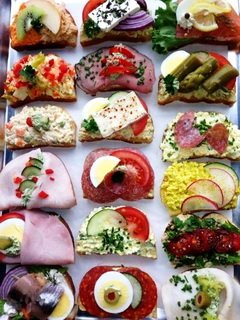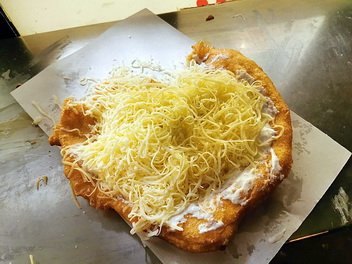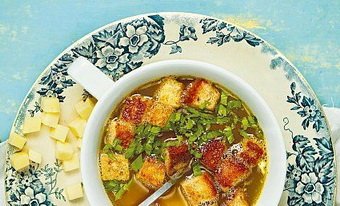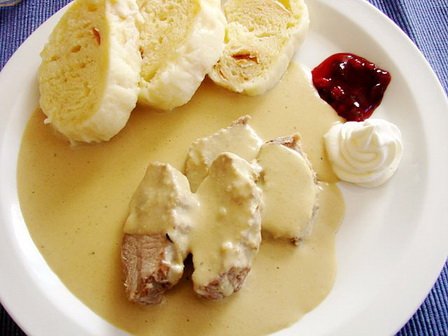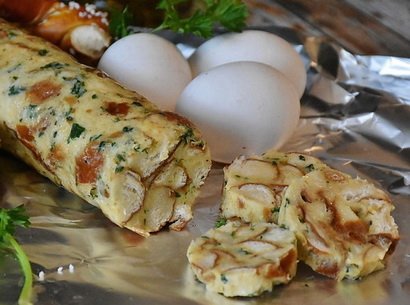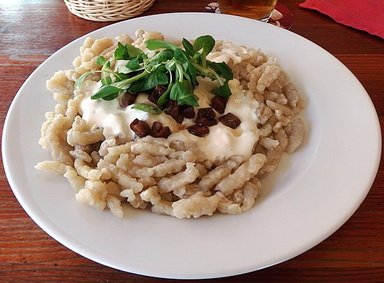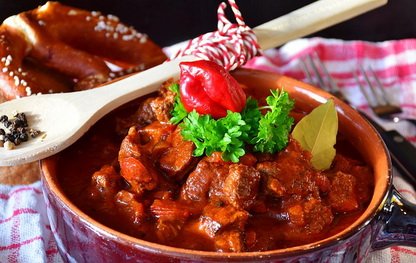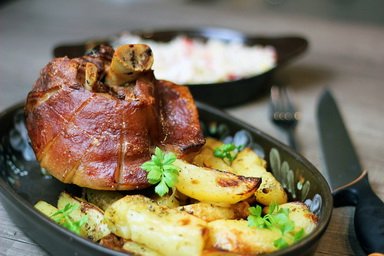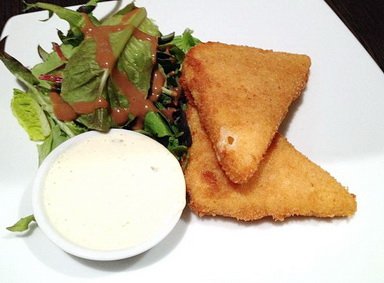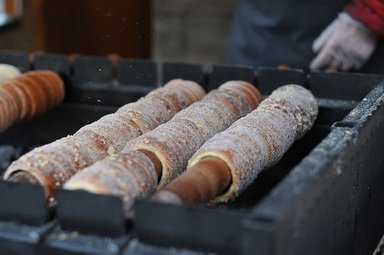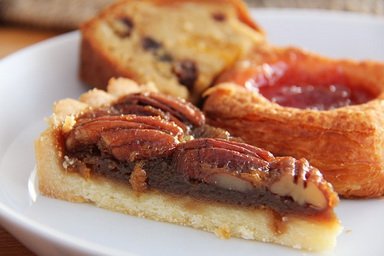To eat or not to eat… good question
what food should you try in Prague
To eat or not to eat… what’s the answer?
Breakfast? Chlebíčky – Tatarák – Klobásy & cold cuts – Langoš – Soups and other: kulajda & zelňačka – Česnečka – Svíčková na smetaně – Knedliki – Halusky – Vepřový řízek – Kančí guláš – Koleno vepřové – Bramborák – Smažený sýr – Ovocné knedlíky – Dessert: Trdelnik – Koláč – Strudel – Buchty & pancakes – Drinks: Beer – Kofola
T
hey say that Prague is like an island inside the Czech Republic. It is the only town that is also a region. They also say that only a few years separate her from becoming a huge agglomeration like Paris. It is constantly changing. You can see it in the way they cook – it is less of the heavy, traditional food of the past and more of the international inspirations.
But let us go back to these traditions, where the main course had two dishes: soup and the second one. Czechia sits in the center of Eastern Europe and the way of life there was that you had to eat well and until full. There is plenty of vegetables and meat in the form of soups, goulash, or main dishes with sauces. Potatoes, flour, and bread were the main source of sustenance.
Prague shows us where it came from in great ways – linking the favorites with the tastes of the XXI century.
What for breakfast?
Many hotels will serve you the traditional, continental breakfast. There will probably be more cold cuts and dairy and fewer vegetables. They like scrambled eggs with good bread or rohlik (long, wheat bun) – you will get it in any restaurant. No problems with finding an English breakfast, granola with fresh fruit, toasts, or American pancakes.
Chlebíčky may be the local attraction for you. They are small open-faced sandwiches (on the photo), only for a bite or two. Eastern Europe loves them, but the rest of the world prefers two-faced sandwiches. Well – we only make these if we want to travel.
At breakfast or lunchtime, you will find them in many places. They are so colorful and full of tastes! Vendors use various cold cuts, fish paste (often mackerel), vegetables, pickles, eggs… It is simple but very good.
Czech people also love sourdough bread. It makes breakfast perfect. Forget about a loaf that you are unable to cut because it is that soft. That one calls here “full of air” or “puffed”. No, in the Czech Republic the bread is heavy and tasty.
Tatarák
It is a well-known appetizer and is greatly appreciated with the evening beer. Czech people prefer a big, afternoon meal, but cold snacks at supper. Steak tartare can be found in many places. It is fresh, perfectly spiced, often with toast, butter, and garlic.
Local tip – grate your garlic clove on the toast and then spread the butter and meat.
Klobásy and cold cuts
Sausages are probably the first thing copied from the Habsburgs. People love them here – any time of the day, and as street food. They are boiled or grilled, preferred with mustard or horseradish and a slice of bread. It is not fancy food, but it will always find the takers. Sausages come in many types and with different spices.
Try the beer version – which should not be a surprise in here. Czech people love sauces and marinating. Beer is a common ingredient.
Another popular treat is called cold cuts (maso). They are smoked, boiled, roasted… Sausages and cold cuts – they are both great treats. You can always put them on a slice of bread and make chlebičky. But the meat lovers have yet another option – a meat platter. You get all the good bites there and it is common to order it with beer or serve at home while meeting friends.
Langoš
It is one of the most popular street foods and it came from Hungary. They are made with yeast dough, the size of a hand and are deep-fried. They are served with cheese, garlic, and ketchup. It is a very easy dish which is quite filling.
Langoš is best enjoyed grabbed by paper or with fingers – you can tear out small chunks and dip them in the additional sauce. Be careful – it sometimes happens that your friends will take a bite! Your treat disappears in seconds and you are left with a memory, greasy fingers and grumbling in your stomach.
Dinner or supper?
You may also get something in between while still walking around. Local, traditional restaurants are called hospoda. Between 11 AM and 2 PM, they serve hotovky. Every table has a card with 3-5 dishes that can be ready in minutes. They are more of a home, classical, Czech dishes. The advantage comes with time of preparation and the price. And you can get a three-part course: soup, main dish, dessert and “compote” (fruit beverage).
Soup
Recipes – here
One is certain when talking about the Eastern European taste buds… they love sauces, soups and if they are made using sour cream – even better! How come they are not rolling instead of walking is uncertain… maybe this is thanks to these old winters’ genes.
Czech people do not stick out. Soup lovers will be in heaven. As in Poland -they like to make it on one main ingredient, thick and full of flavors after hours of preparation. The base is often a meat broth – which kind depends on grandma’s recipe. Mushroom soup, garlic, potato, pea, or sauerkraut soup… choose. Czech Republic neighbors will find inside some interesting ingredients. Travelers from far away will love the consistency and the novelty of this dish.
Kulajda
It is a mushroom soup (photo above) with the addition of potatoes. It is mixed with sour cream, sprinkled with dill and vinegar/pumpkin oil. They sometimes add an egg. Everything is tasty and filling. Taking into account that there are little vegetarian dishes, you may think about ordering them.
Zelňačka
It is another simple soup. This time based on sauerkraut/sour cabbage. As in Poland – they add potatoes and smoked sausage. But Czech people like it with sour cream and mushrooms.
Česnečka
Although the previous ones are the classics, it is this one that is sought by tourists. It is quite controversial, probably because of the main ingredient – garlic. Doesn’t matter if it is the broth with bread cubes or the thick version – with cheese… They are both tasty. Locals like to add caraway and marjoram to this garlic soup.
It is less popular, but you shouldn’t have problems with finding it. And one thing is certain – both count Dracula and hangover will stay away from you.
Svíčková na smetaně
There is no other national dish both classical and foreign (there is some Austrian and French influence in it). Soft, puffy knedliki (read below) accompany the sauce made of root vegetables. On top of it lie pieces of juicy, tender meat. The perfect svíčková has a splash of cranberry marmalade and whipped cream. The dish is beautiful and tastes great.
Meatlovers who do not like sweet additions should taste it with caution.
A variation of a similar sort is vepro-knedlo-zelo. Usually with no sauce. The meat comes with sour or red cabbage. They like pork here – various cuts, even veprovy-rizek. Knedliky are a must. All the favorite ingredients in yet another form. For Prague people, it is such a common dish that you can call it boring. But the visitors may be happy to try it.
Knedliki
Recipe link
It is a popular addition to dishes, especially those with sauce (photos above). They are often made with flour, sometimes mixed with potatoes. They are steamed in a roller shape and then cut into slices (in Poland they are round like a bun and called pampuchy).
There is also a version having flour, potatoes, and bread cubes inside. Before, it could have been a way not to waste food. Today it is a curiosity and a window to the local culture. Nothing could go to waste and only a bit of bacon, caraway, and other spices turned leftovers into a new thing.
Halusky
It is something between dumplings and short, thick noodles. The pasty is a mixture of flour and potatoes. How it looks you see on the adjacent photo. Halusky are either cut or separated from the main dough with a spoon and thrown into hot water directly.
Many people love it with white, sour cheese and bacon. There are some Slovak influences here, but at some points, these lands belonged to one tribe, so it is understandable. They will be always good with sour cabbage and fried onions. They are often served with pork knuckles.
One thing is certain. If you are not from that part of Europe – you must try them.
Vepřový řízek
Otherwise known as schnitzel. It is safe to say that we all love it.
A thinly beaten slice of pork is put into beaten eggs and then into the breadcrumbs. This way you get the soft, crunchy skin. It smells like heaven, making you want to have a bite.
The common addition is called “příloha ” – it is usually potato puree or French fries. But sometimes you get the Czech potato salad, which is said to be the best addition to řízek.
Kančí guláš
Beef goulash recipe link
This particular one will probably be the best goulash you will ever eat. It is made with wild boar meat and red wine. It is ideally sour and spicy. In winter makes you warm instantly.
Traditional beef goulash is equally tasty, don’t be sad if you don’t find the wild boar. It is the national dish of all the countries in the Poland – Hungary line. The essential is to make meat dissolve in your mouth, transferring spices to your tastebuds. Soup-like or thick… they are both with additional benefits.
When a goulash tastes the best? When it is about to finish of course… after three days of reheating. For this variation, you need to get a home invitation. In restaurants, nothing can be older than a few hours. An old Slav tradition says that a new goulash has to have a spoonful of the old one.
Koleno vepřové
Recipe link
Another heavy dish in an XL size that should serve two. The pork knuckle is roasted or grilled. They arrange everything on a plate, the bone is sticking out, the skin is slightly cut. Typically they serve it with green pickled cucumber, golden mustard, white horseradish, red pepper, and potatoes/halusky.
The idea is medieval, and we don’t even know about it. Some restaurants marinate the pork in beer. The meat is so soft … and it gets some extra flavor. The dish is huge so go hungry. It is essential that you take some Czech beer with it.
Bramborák s masovou směsí
Recipe link
A huge potato pancake is thick and folded in half. The filling inside is meat in the sauce. It is a quite filling dish. When it comes with a description “Hungarian” it will probably be spicy. There is no salad here, only obloha – some slices of fresh cucumber, sweet pepper, and tomatoes.
Don’t worry – they come in a smaller version as well. More of a hash brown size. They are usually spiced with pepper, salt, marjoram, and sometimes – caraway and garlic. This type of potato can easily be eaten with other dishes. It is tasty and crunchy eaten on its own (preferably with fingers). On a photo – with sour cabbage.
Smažený sýr
What do vegetarians eat in Prague? Mostly fried cheese in breadcrumbs served with potatoes or French fries. It is wonderfully gooey and soft. Children love it.
The more expensive version is made with hermelín – Camembert. It is served everywhere but is mostly eaten in bars alongside the beer. Your heart will hate you, but your tastebuds will be in heaven.
Ovocné knedlíky
Recipe link
A summer dish that is loved by children and adults.
Big round balls, also called “knedle”, are made from a pastry with yeast or potatoes. They are stuffed with fruits – berries, apricots, strawberries, or others. They have butter on top, sometimes cocoa, and whipped cream.
After a hearty soup, a second course like that will be just perfect.
Trdelnik
It is impossible to come to Prague and not eat this. It is by far one of the best treats in the city. Trdelnik is a roll-shaped pastry baked/roasted on a special grill. It is sprinkled with sugar and cinnamon and it smells great. They should be eaten empty inside, but a Nutella and icing versions were invented. Some places even put ice cream inside. You should get this treat almost everywhere in the Old Town – just follow your nose!
They come from Transylvania, are not local, but visitors can’t imagine Prague without them. There is something so fascinating in the rolls slowly turning above the fire. The smell of wood or coal, and sweets make you come closer.
The golden rolls are the best straight off the fire – of course! But they are too hot, so we recommend the ones that cooled a bit. They are wonderfully gooey and crunchy.
Kremole may be the Czech version of the same treat. They look like cannoli. There is no ricotta inside, but a savory cream. They are not too big, tasty, and crunchy.
Koláč
It is one of the most popular cakes from the coffee shops. The sweet, yeast dough is covered in fruit marmalade, sour white cheese, poppy, or crumble. There seems to be a lot of ingredients but the cake is flat as a pizza and light on the stomach. It is easy to make a takeaway out of it, go to the Vltava, and look at the swans! (on the photo – a nut version)
Strudel
Austrian influence can be seen in local sweets as well. What do Prague people do on a Saturday afternoon in the city? They go for a Vienna coffee (vídeňská kava) – which means a black coffee with a mountain of whipped cream. And they also order an apple pie – or what they call in here – strudel.
The cake is best enjoyed warm, with whipped cream. It smells and tastes like apple heaven.
Buchty and Palačinky
Recipe link
Imagine a soft, sweet, yeast bun that was somehow put into a cooking form. They were baked one, next to the other, or rather the dough in the form was shaped, somehow, into buns. That way is the best of the best. It has this crunchy skin on top and on the bottom, but the sides are soft. They were just glued to another bun and now you can tear tasty bites from there…
Buchty is eaten for breakfast and as a dessert. At home, they usually arrive with marmalade or honey. They are so addictive… The fresher the better.
Another easy, homemade sweet is palačinky. These are pancakes. They are a bit thicker than the French ones and they like to eat them sweet – with marmalade, white sour cheese, or with whipped cream.
And because it is not sweet enough – they add extra sauce and sprinkle it with powdered sugar.
Piwo
There is no question. Fresh from the tap (točené), with the right amount of beer head and at the correct temperature. This is what will quench your thirst. The most famous, Czech brewery is called Staropramen. It is not necessarily the best – there is a lot of small places offering artisanal products. It will take you a lot of time to prove it though.
Careful, the Czech Republic beer has levels of alcohol power and taste – till 12° is normal, and everything above is called “special”.
Look at the photo – do you know these names?
People say the local beer is this good because there is less CO2 inside. Others – that this is the water and brewing techniques. You just need to try them and decide on your own.
And if you fancy a tourist trap go to the Beer SPA. You will be able to bathe in beer, drink it and eat beer snacks. Everything at the right price of course 😊
Kofola
The favorite, non-alcoholic drink. It is based on Coca-Cola but has a different aroma. According to the Czech, it is much better. You can get it from the tap as well – big (500 ml) or small (300 ml) sizes.


